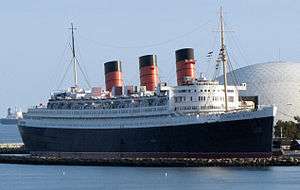
Secret (Heart song)
"Secret" is a song recorded by American rock band Heart. It was released as the fourth and final single from the band's tenth studio album Brigade.
The track is a rock power ballad which did not meet with much mainstream success, peaking at number sixty-four on the U.S. Billboard Hot 100 and number seventy-nine on the UK Singles Chart. As an emotional song, it portrays forbidden love and the tragedy that the situation is. The communication in this power-ballad is often linked to the still on and off relationship Ann maintains with ex-guitarist Roger Fisher.
Chart performance
References
External links
Secret (disambiguation)
A secret is information kept hidden.
Secret or The Secret may also refer to:
General uses
Brands and Products
Places
Ships
Film and television

Kylie Minogue singles discography
The singles discography of Australian recording artist Kylie Minogue consists of 69 singles (nine as a featured artist) and twelve promotional recordings.

Triangle (The X-Files)
"Triangle" is the third episode of the sixth season of the American science fiction television series The X-Files and premiered on the Fox network on November 22, 1998. Written and directed by series creator Chris Carter, "Triangle" is a "Monster-of-the-Week" episode, a stand-alone plot which is unconnected to the overarching mythology of The X-Files. "Triangle" earned a Nielsen household rating of 10.8, being watched by 18.20 million viewers in its initial broadcast. The episode generally received positive reviews, with many critics commenting on the episode's unique directing style.
The show centers on FBI special agents Fox Mulder (David Duchovny) and Dana Scully (Gillian Anderson), who work on cases linked to the paranormal, called X-Files. Mulder is a believer in the paranormal, and the skeptical Scully has been assigned to debunk his work. However, the two have developed a close friendship. In this episode, Mulder races to a luxury passenger liner which has mysteriously appeared on the edge of the Bermuda Triangle. Once there, he realizes he has traveled back in time to September 3, 1939—the outbreak of World War II. Nazi soldiers have boarded the ship in search of "Thor's Hammer", something that could ensure victory in the coming conflict. Meanwhile, Scully, after being informed of Mulder's disappearance by The Lone Gunmen, rushes through the J. Edgar Hoover Building, looking for someone who can help find her missing partner.

Rack (billiards)
A rack (sometimes known as a triangle) is the name given to a frame (usually wood, plastic or metal) used to organize billiard balls at the beginning of a game. Rack may also be used as a verb to describe the act of setting billiard balls in starting position in billiards games that make use of racks (usually, but not always, using a physical rack), as well as a noun to describe the balls in that starting position.
The most common shape of a physical rack is that of a triangle, with the ball pattern of 5-4-3-2-1. Racks are sometimes called simply "triangles" (most often by amateur shooters) based on the predominance of this form. Triangular-shaped racks are used for eight-ball, straight pool, one-pocket, bank pool, snooker and many other games. Although diamond-shaped racks, with an intended pattern of 1-2-3-2-1, are made for the game of nine-ball, the triangular rack is more often employed in nine ball as well.
Racking in specific billiards games
Eight-ball
In eight-ball, fifteen object balls are used. Under the Billiard Congress of America's World Standardized Rules: 8-Ball it is prescribed that:

Triangle (musical instrument)
The triangle is an idiophone type of musical instrument in the percussion family. It is a bar of metal, usually steel but sometimes other metals like beryllium copper, bent into a triangle shape. The instrument is usually held by a loop of some form of thread or wire at the top curve. It was first made around the 16th century.
Shaping
On a triangle instrument, one of the angles is left open, with the ends of the bar not quite touching. This causes the instrument to be of indeterminate or not settled or decided pitch. It is either suspended from one of the other corners by a piece of, most commonly, fishing line, leaving it free to vibrate, or hooked over the hand. It is usually struck with a metal beater, giving a high-pitched, ringing tone.
Although the shape is today generally in the form of an equilateral triangle, early instruments were often formed as isosceles triangles. In the early days the triangles did not have an opening and had jingling rings along the lower side.
Podcasts:

